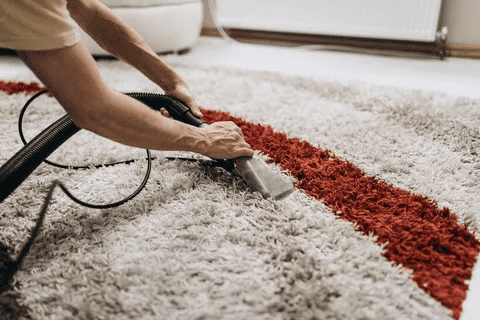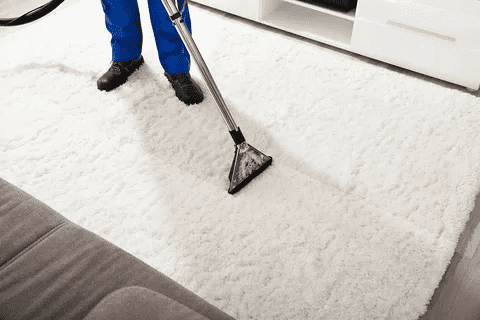Maintaining a clean and fresh-looking carpet is essential for creating a healthy and welcoming living space.
As homeowners, we often find ourselves faced with the dilemma of which Carpet Cleaning method is best. The market offers various options, with wet, dry, and do-it-yourself (DIY) methods being the most common.
This guide will explore each method, weigh its pros and cons, and help you make an informed decision on which carpet cleaning method is truly the best for your needs.
Wet Carpet Cleaning Method
Wet carpet cleaning, steam cleaning or hot water extraction is a famous professional method involving hot water and cleaning solutions.
The process begins with applying a cleaning solution onto the carpet, followed by hot water extraction using a powerful vacuum.
This method is highly effective in removing deep-seated dirt, stains, and allergens.
Pros of Wet Carpet Cleaning
- Deep cleaning: Wet cleaning penetrates the carpet fibres, providing a thorough and deep cleaning experience.
- Effective stain removal: Stubborn stains are often easier to remove with hot water extraction.
- Professional assistance: Many carpet cleaning services offer wet cleaning with professional-grade equipment.
Cons of Wet Carpet Cleaning
- Longer drying time: Carpets cleaned using the wet method can take a longer time to dry completely.
- Potential for mould and mildew: If not dried properly, the residual moisture can lead to mould growth.
Dry Carpet Cleaning Method
Dry carpet cleaning, also known as dry compound cleaning, involves using a minimal amount of moisture.
A cleaning compound is applied to the carpet, which absorbs dirt and is then vacuumed away, leaving the carpet clean and dry.
Pros of Dry Carpet Cleaning
- Quick drying time: Dry cleaning methods usually result in carpets that dry faster than wet methods.
- Ideal for maintenance: Dry cleaning is suitable for regular maintenance and light cleaning.
- No risk of mould or mildew: Since minimal moisture is used, there is a lower risk of mould growth.

Cons of Dry Carpet Cleaning
- Limited deep cleaning: Dry cleaning may not be as effective in removing deep-seated dirt and stains.
- Chemical sensitivity: Some individuals may be sensitive to the cleaning compounds used in dry cleaning.
DIY Carpet Cleaning Method
For the hands-on homeowner, the DIY carpet cleaning method involves using store-bought or homemade cleaning solutions with a carpet cleaner machine or rented equipment.
Pros of DIY Carpet Cleaning
- Cost-effective: DIY carpet cleaning is often more budget-friendly than hiring professional services.
- Convenience: Cleaning your carpet at your own pace and schedule.
Cons of DIY Carpet Cleaning
- Limited expertise: DIY cleaning may not achieve the same results as professional cleaning methods.
- Risk of over-wetting: Too much water can lead to over-wetting and potential mould issues.
Wrapping Up
The choice between wet, dry, or DIY carpet cleaning methods depends on various factors, including the extent of cleaning required, the type of carpet, and personal preferences.
Wet cleaning is ideal for deep cleaning, dry cleaning is suitable for quick maintenance, and DIY cleaning provides a cost-effective option for those who prefer a hands-on approach.
Before deciding on ‘which carpet cleaning method is best’, assess your carpet’s condition, consider your time constraints, and weigh the pros and cons of each method.
Ultimately, the best carpet cleaning method is the one that aligns with your specific needs and ensures a clean and healthy living environment for you, so it’s better to leave it to experts.
You can trust Total Cleaning Melbourne as your premier carpet cleaning experts, as our team comprises fully trained and experienced professionals who approach every job as a significant challenge.

